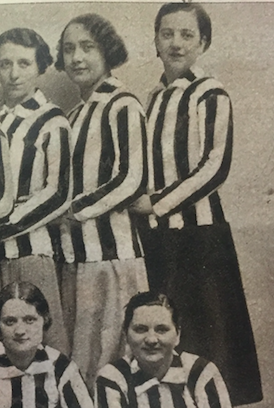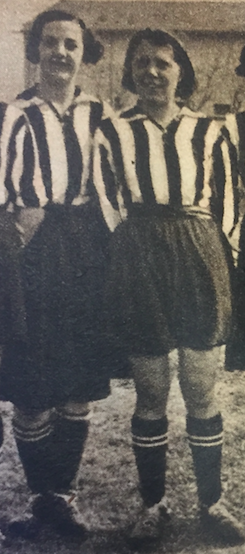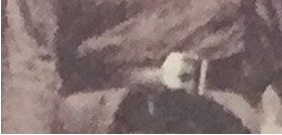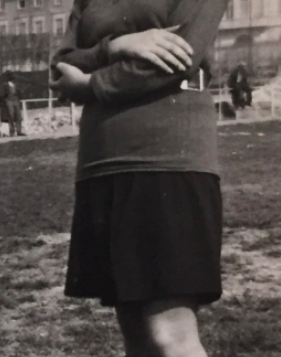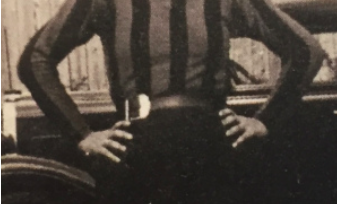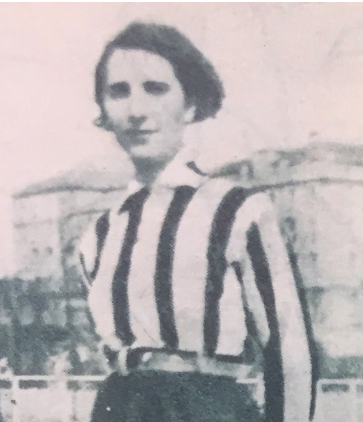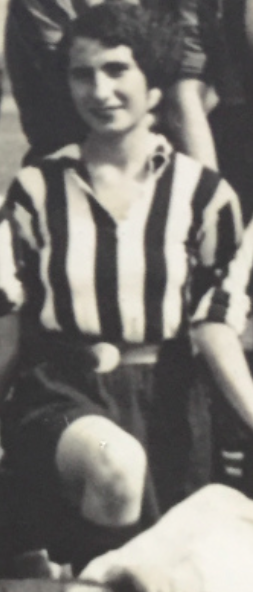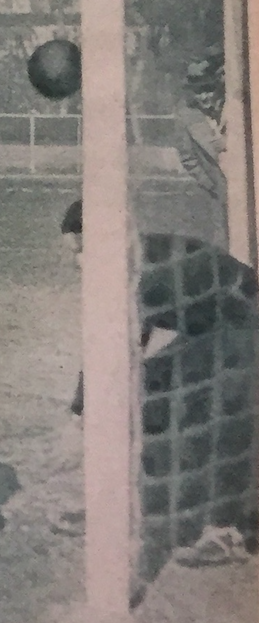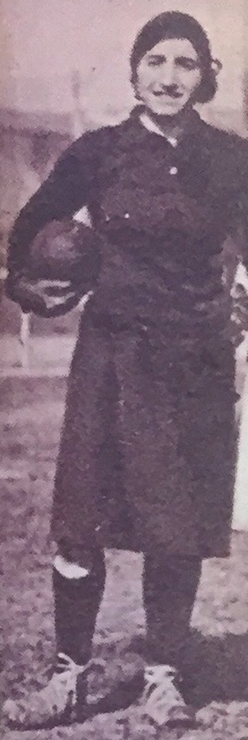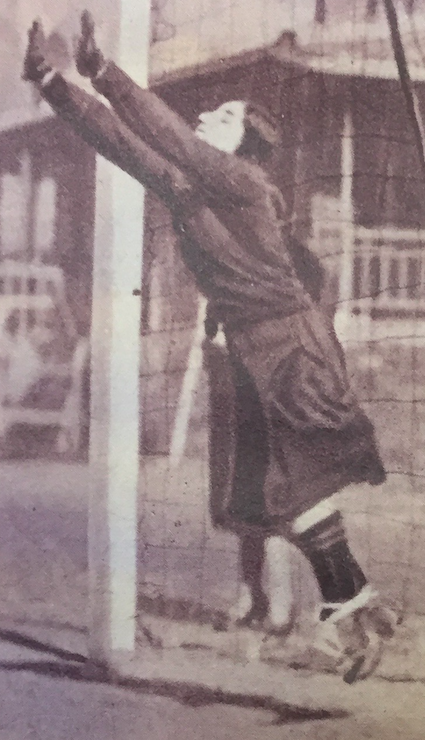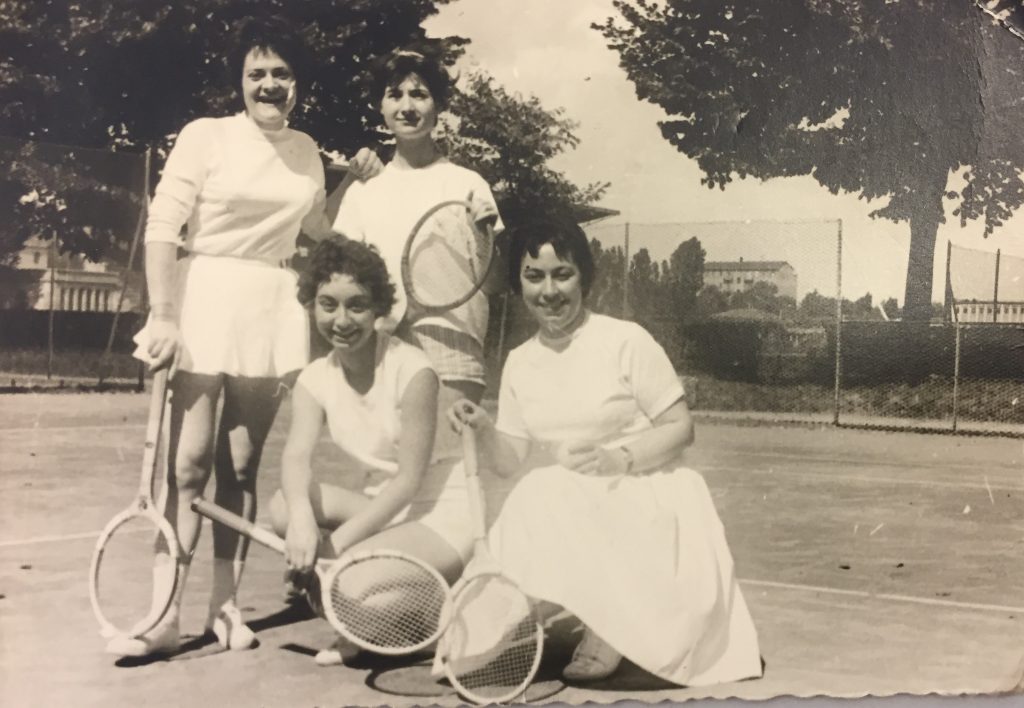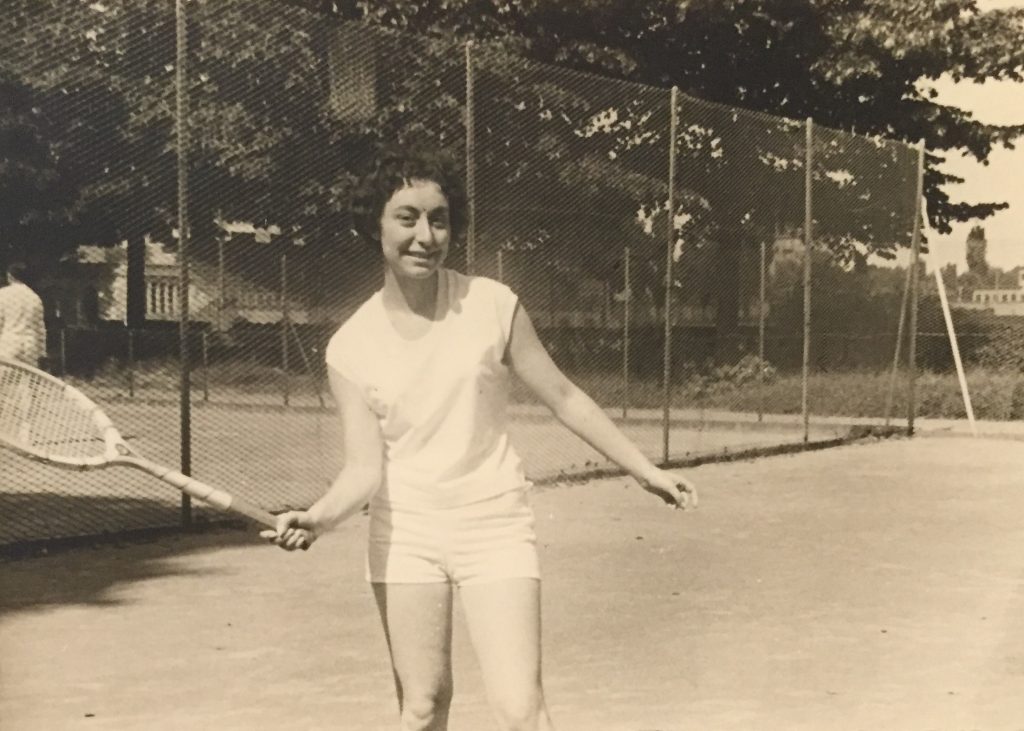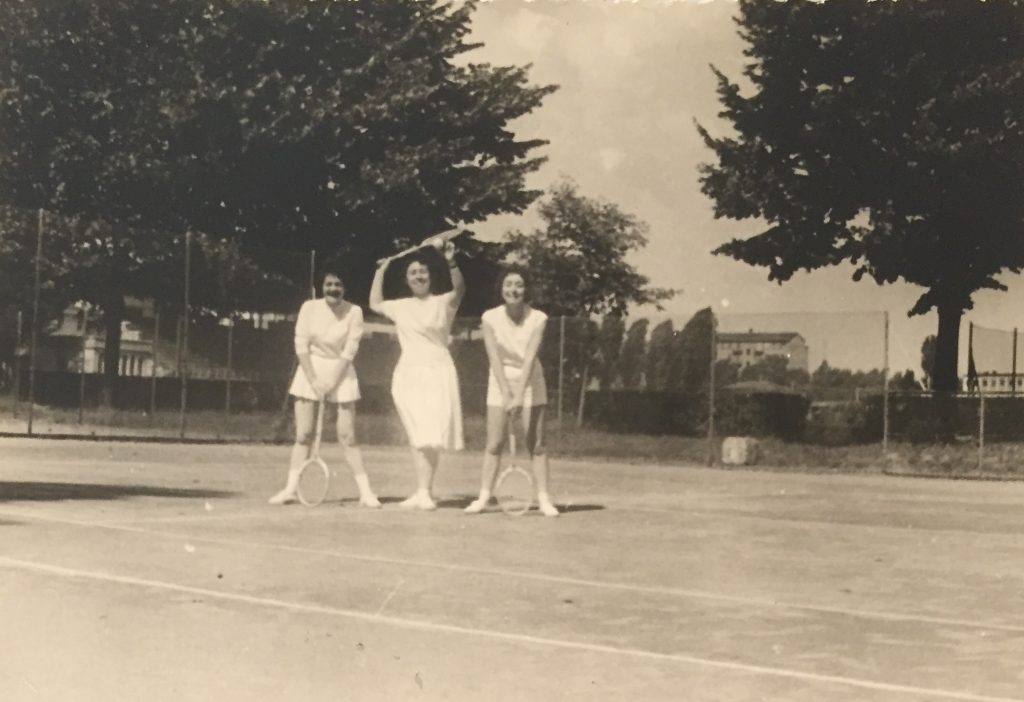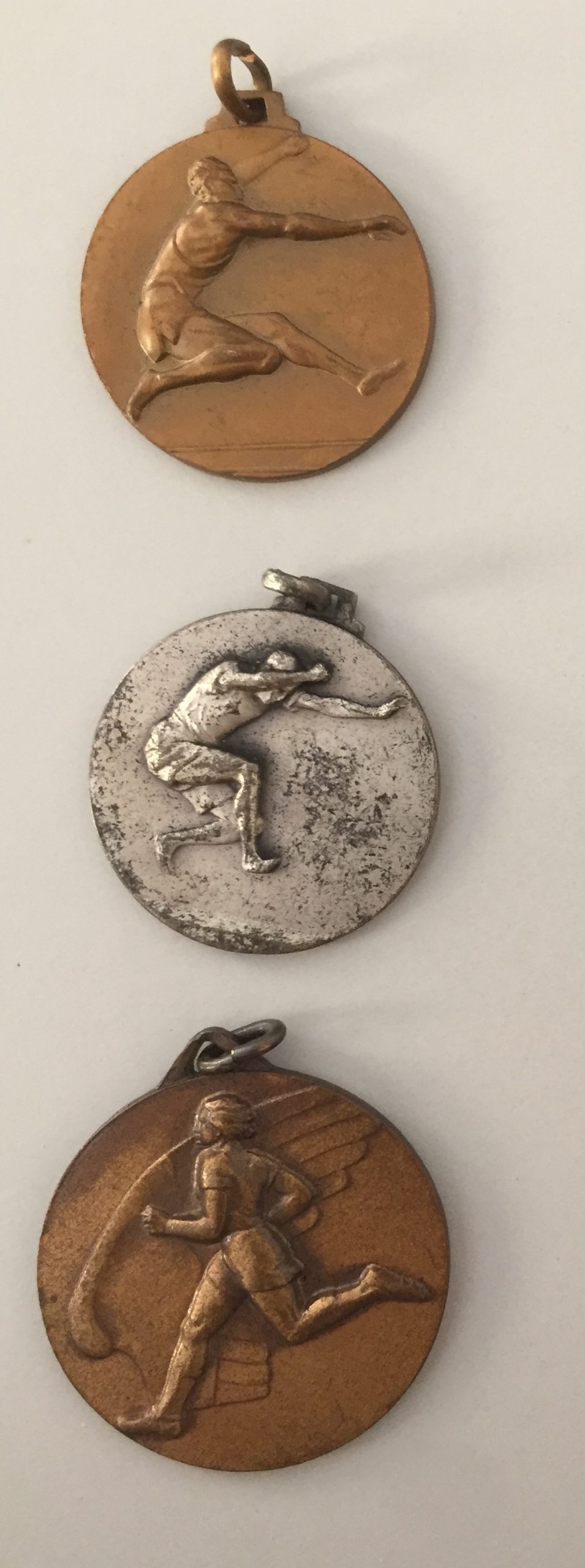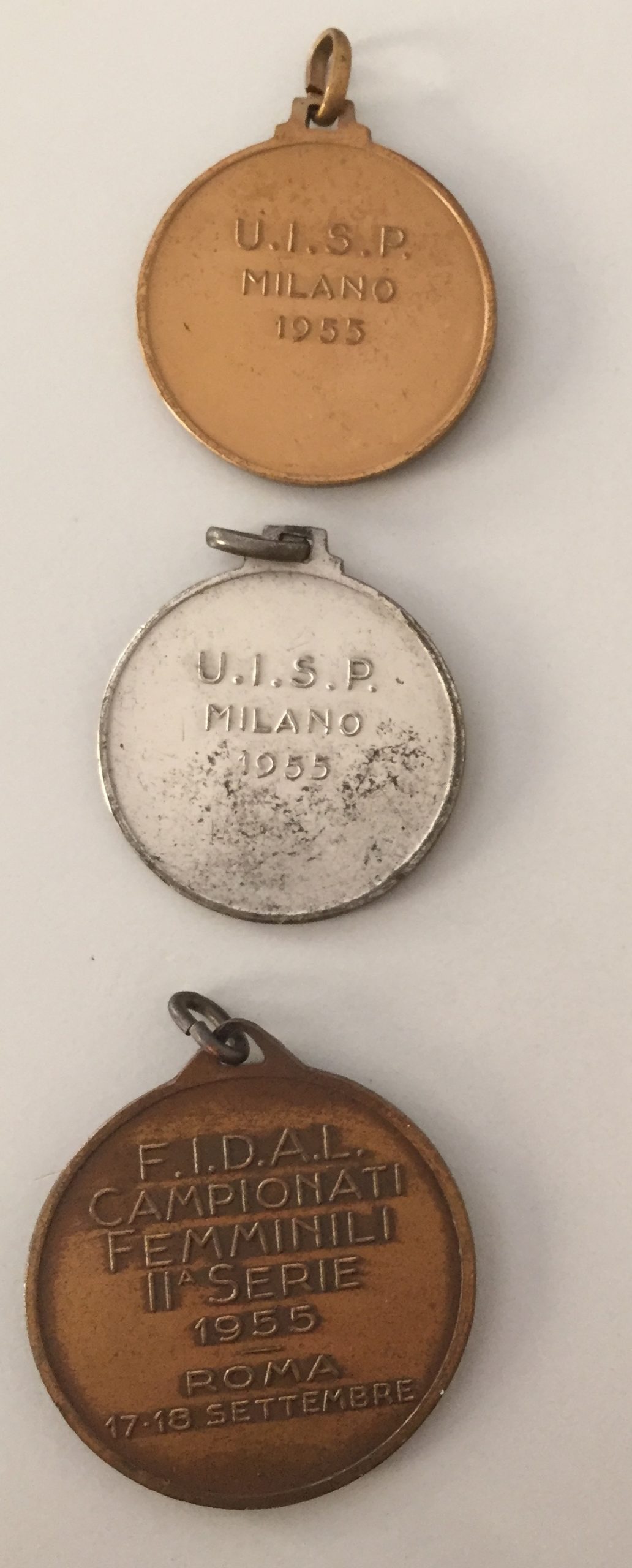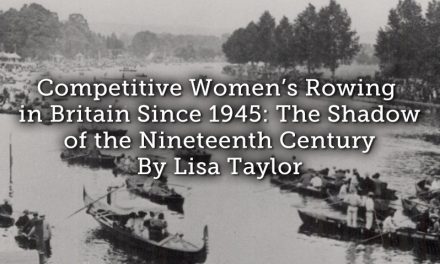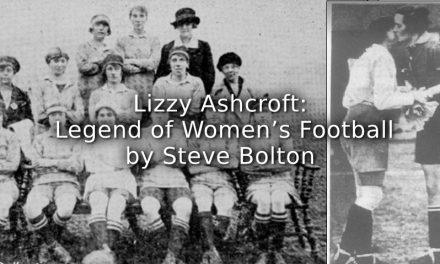The author would like to express thanks to: Luigi and Francesco Ferrari, Marco and Silvia Bonitta, Rosa Mottino, Francesco Bacigalupo, Paolo Gilardi for the photographs coming from the personal archives of their ancenstors; Alice Vergnaghi for the help in the analysis of such photographs.
PLEASE NOTE – Express permission is required to reproduce ANY of the images taken from these personal archives – please contact Playing Pasts or the author for more details.
To read the previous articles in this series please see the links below –
Part 1: Part 2: Part 3: Part 4: Part 5: Part 6: Part 7: Part 8:
Four years after the publishing of the first articles on the Gruppo Femminile Calcistico (GFC), the amount of verbal and visual writing on the first-ever women’s football in Italy is considerable. Since the discovery of Giovanna Boccalini Barcellona’s archive (summer 2020) which resulted in the access to hundreds of new photos, I have been goving a lot of thought to a solution for both managing and allowing everybody access to this cultural heritage. So I started a website, called “Sorelle Boccalini”, in order to share all the photos about the history of the Boccalini family, coming from several personal heirs’ archives. Since the family’s history is deeply linked with the GFC’s history, I realized that I should reserve some specific places for the calciatrici ‘women’s footballers’, too.
‘La galleria delle calciatrici’ is the visual gallery of all. First, I published each image that I was confident of being correct, relying on newspapers’ captions or on clear visual similarities: I was helped by Giovanna Boccalini Barcellona’s biographer Alice Vergnaghi, who had previously helped me in identifying the Ambrosiana women’s basketball players in Part 7 of this series (see http://bit.ly/3bm6MKY ). At the bottom of the page, I gathered all the images of unknown calciatrici: a very useful tool, I guess, for the future meetings with new calciatrici‘s heirs, who could more easily recognize their mothers, aunts and grandmothers!
Nevertheless, the building of this page had already given some interesting results. First of all, such wide visual comparison had enabled us to find some specific visual features: basically, working on verbal sources could lead us to forget that those girls were not made of words, but they also had a ‘body’, an athletic body.
-
(1)
Starting with the very first team photo,
Maria Bedetti looks like one of the tallest players: she’s the 3rdin picture number 1 and the 1st in picture number 2
-
(2)
Sources: (1): Il Calcio Illustrato, 15/03/1933;
(2) Il Calcio Illustrato, 12/04/1933, p. 13.
In addition to this, as they were the very first ones who dared to play football in Italy, they tried to personalize their football kit
-
(1)
Sources: (1) Il Calcio Illustrato, 29/03/1933, p. 11
-
(2)
Brunilde Amodeo’s belt
as you can see had a rectangular buckle
-
(3)
Sources: (2 & 3) Archivio privato Brunella Bracardi;
- Mina Bolzoni (1)
- Mina Bolzoni (2)
- Mina Bolzoni (3)
- Mina Bolzoni (4)
The crescent-shaped buckle helped in identifying Mina Bolzoni, as well as in the later photographs, where she is wearing the GS Cinzano shirt, as well as the black and white striped shirt. Sources: (1) Il Calcio Illustrato, 26/07/1933, P. 7: (2,3,4) Archivio privato Rosa Mottino
Yet there’s a further and more important result, which couldn’t be reached by relying only on written source. Thanks to the articles published by newspapers, we know that during the first matches, in March 1933, a pair of girls played as goalkeepers: worried about their physical safety, in early April they decided to give this role to 13-years old boys. Looking at all the pictures, we can now argue that the first-ever two female goalkeepers of Italy were Wanda Torri, and more importantly, Luisa “Gina” Boccalini, who used to wear a very elegant all-black kit.
- (1)
-
(2)
Luisa Boccalini the goalkeeper
Sources: (1) Il Calcio Illustrato, 22/03/1933, p. 16
(2, 3) Il Calcio Illustrato, 29/03/1933, p. 11.
- (3)
During July 2020 ‘Giovinette’ was published in Italy, by Solferino. This book, which contains an historical novel written by Corriere della Sera journalist Federica Seneghini and essay of mine about the history of the prejudice against women playing football in Italian society, which enabled many people to understand the GFC history. Such a public history operation gave birth to a bidirectional information flow: I have received much literary and historical feedback from the audience, as well as an email from Mr. Alberto Schiavi from Milano. He asked me about an element of the historical novel written by Federica: in his opinion, the calciatrici could not have played on that particular pitch during the morning, because the shadows visible in the photos published in my articles were those typical of an afternoon. Since I’m not that familiar with orientation and astronomy, I was a quite astonished when I first read Mr. Schiavi’s email: however after a telephone conversation, I realized that he was also an amateur historian of Milanese amateur football fields. His professional past enabled him not only to use topographical maps, but also to recognize the buildings in the background of the picture. I proposed a collaboration, in order to reconstruct the location of each football field used by GFC in 1933: a new section of the website was therefore launched …
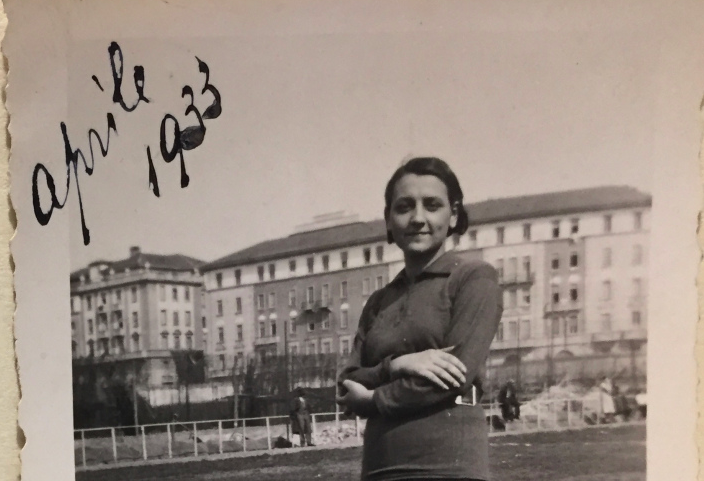
Brunilde Amodeo smiling, in April 1934. The caption doesn’t say where she was …
Source: Archivio privato Brunella Bracardi and http://bit.ly/3aQLJ4F
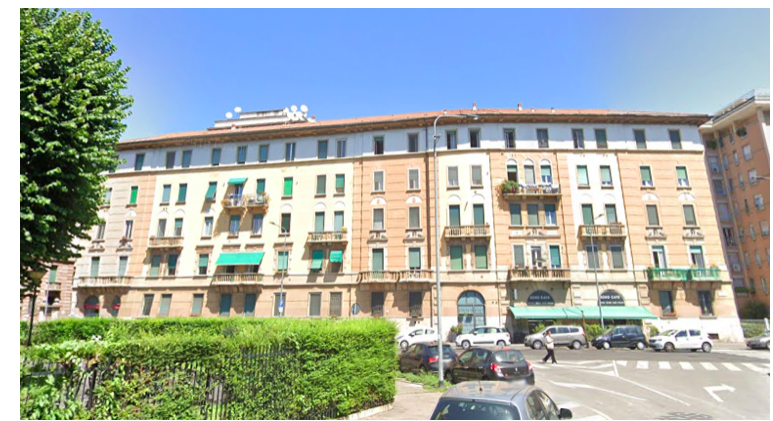
… but the building behind her is undoubedtly the same we still see in Via Tertulliano!
Source: http://bit.ly/3aQLJ4F
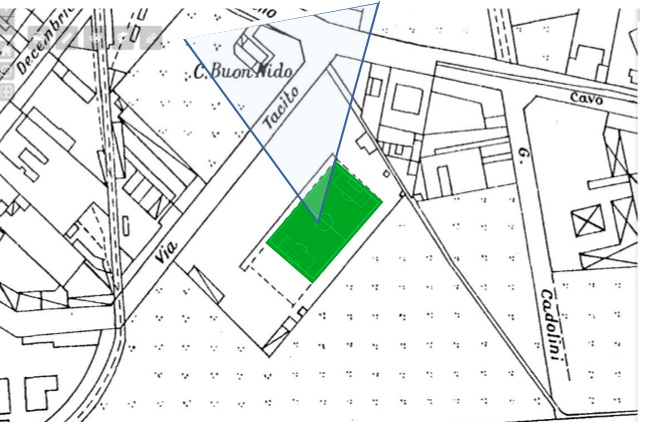
Then, using an old map, we can reconstruct not only where the pitch was,
but also the point from which that Brunilde’s photo was taken!
Source: http://bit.ly/3aQLJ4F
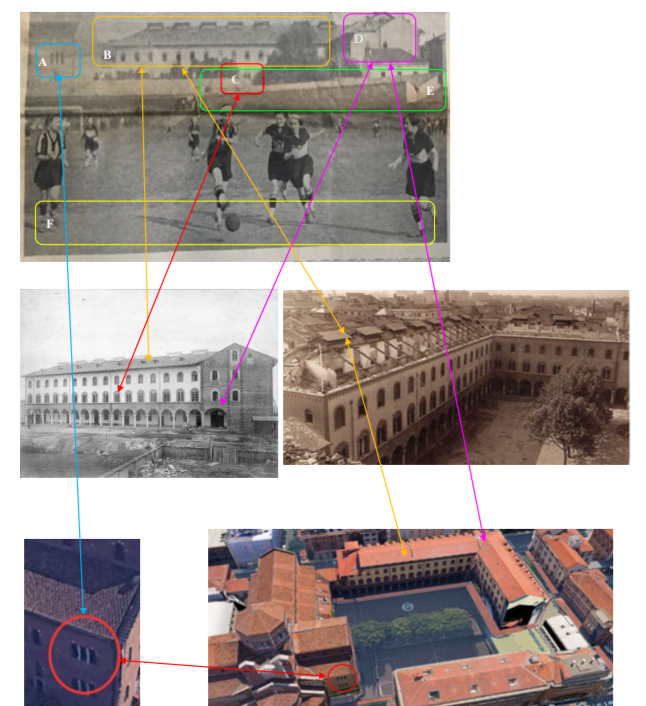
The calciatrici playing at the GRF Fabio Filzi field, in 1933
A photograph can be full of interesting details, if you compare it with old and contemporary pictures …
Source: http://bit.ly/3hpoJem
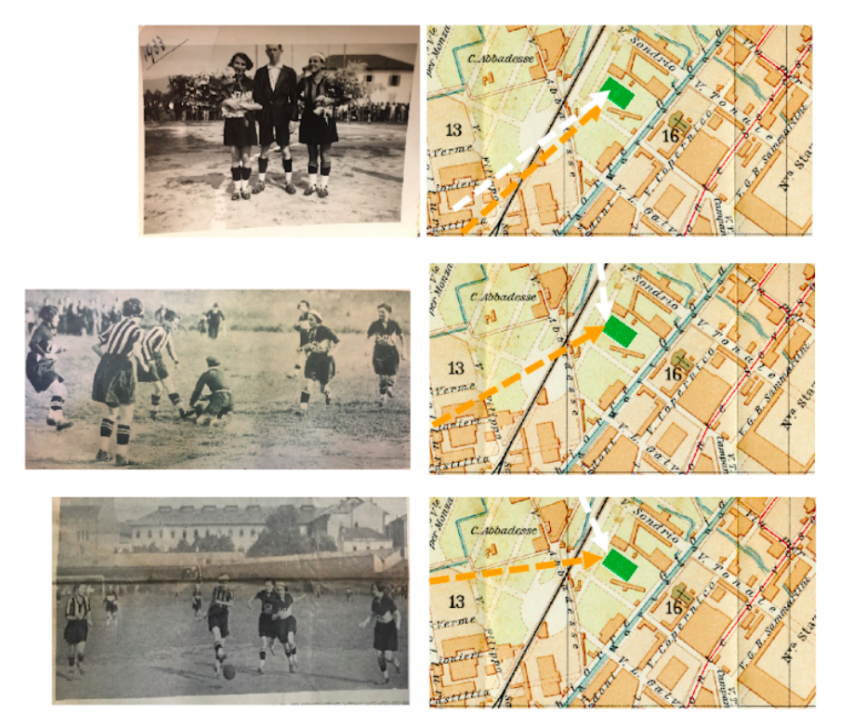
On the left, the position of shadows in 3 different GFC photographs;
on the right, the position of the pitch (green rectangle), and the direction of the light (arrows)
Source: http://bit.ly/3hpoJem
This kind of historical reconstruction is very useful, because none of the football fields used by GFC in 1933 exist anymore: the women players used to play in fields loaned by their male amateur colleagues, that were located at the edge of the city. After the end of WW2, Milan widened due to its industrial and demographical growth, and all those old pitches disappeared, as they were not considered so historically important as the Arena Civica or the San Siro stadium. So therefore so did the memory of them among the Milanese people … So reconstructing their position and history is very important, not to forget those elements of social and sportive history of Milan. Memory needs a place to stand and spread among people: that’s why in September 2020, thanks to the success of the ‘Giovinette’ book, the City Council of Milan decided to name a street after the GFC players (see https://bit.ly/3mZIx9r). The via Calciatrici del ’33 ‘1933 Women’s Footballers Street’ will be inaugurated in Spring 2021, or later, depending on the Covid-19 crisis …
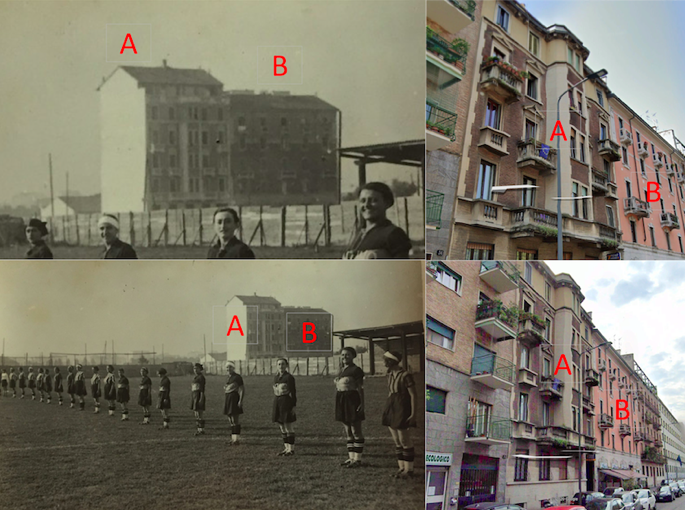
In a lot of GFC photos, the calciatrici play behind an almost empty skyline, with just a few buildings
As you can see from these comparisons (1933-2020), the city had meanwhile widen …
Source: http://bit.ly/3pAduTw
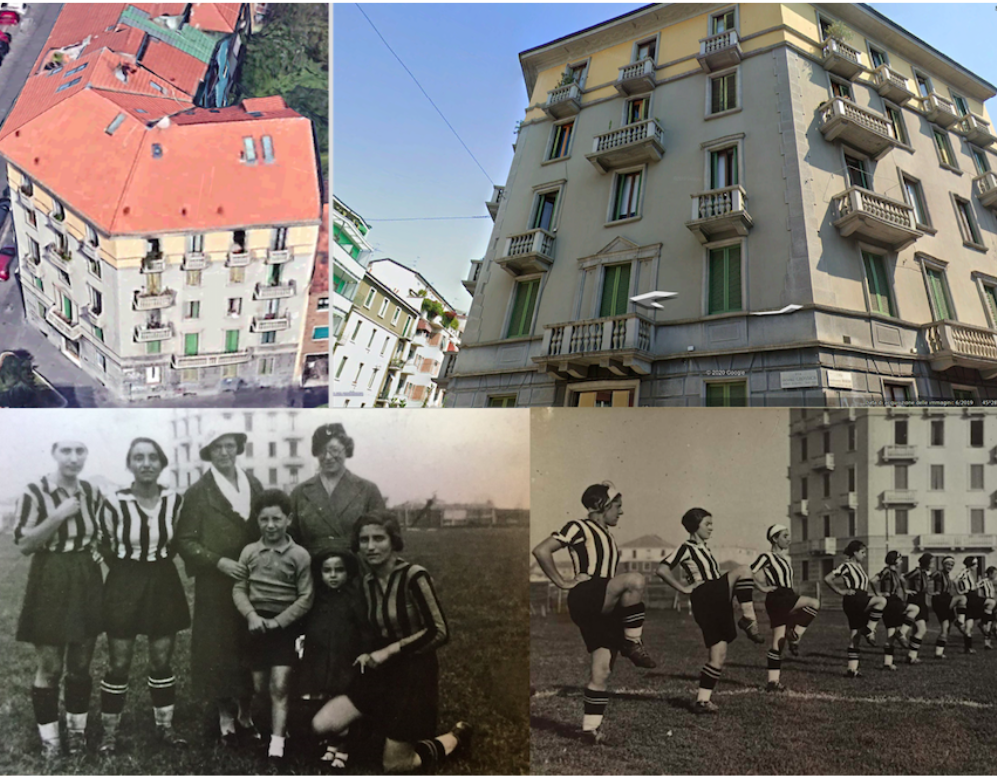
Via Alfonso Corti field, in particular, was located where now there’s no green area at all,
between the quarters of Città Studi and Lambrate
Source: http://bit.ly/3pAduTw
This year also proved very fruitful for researching of the heirs. In Part 8 I wrote about Valeria Toso, granddaughter of Teresa Boccalini (see https://bit.ly/3a8bNrH ), but before that, in August 2020, I had the opportunity to travel by train to Ravenna, spending a whole day with Marco and Silvia Bonitta, son and daughter of Gioia Mottino, the first daughter of Luisa Boccalini (I had previously met her second daughter, Rosa Mottino).
I already knew that Paolo (son of Rosetta Boccalini) was an amateur marathon runner; yet the most important results among Boccalini’s sisters male heirs are those of Marco Bonitta, a volley professional coach (of the male team Porto Robus Costa, in Ravenna, the city in which he was born in 1963) who guided the Italian Women’s National Team in winning the silver medal at the 2001 European Championship and at the 2005 European Championship , and above all the gold medal at the 2002 FIVB Women’s World Championship.
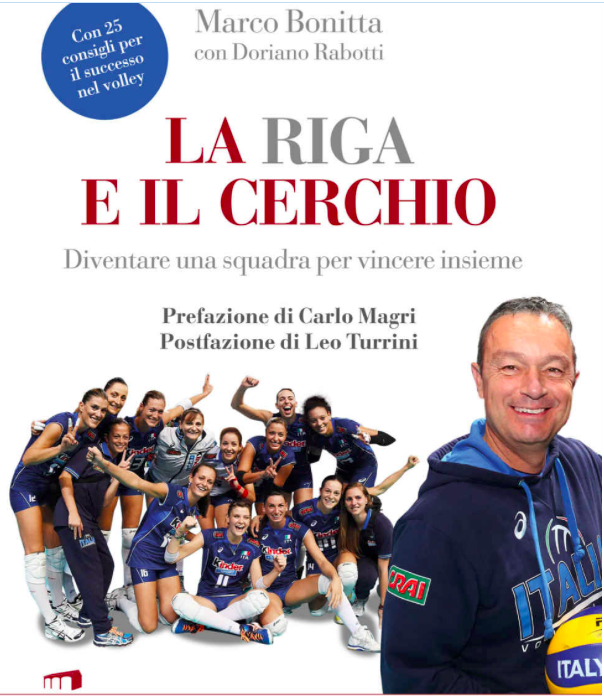
Marco Bonitta, Italian National Team coach, on the cover of his 2016 autobiography
Source: Marco Bonitta and Doriano Rabotti, La riga e il cerchio.
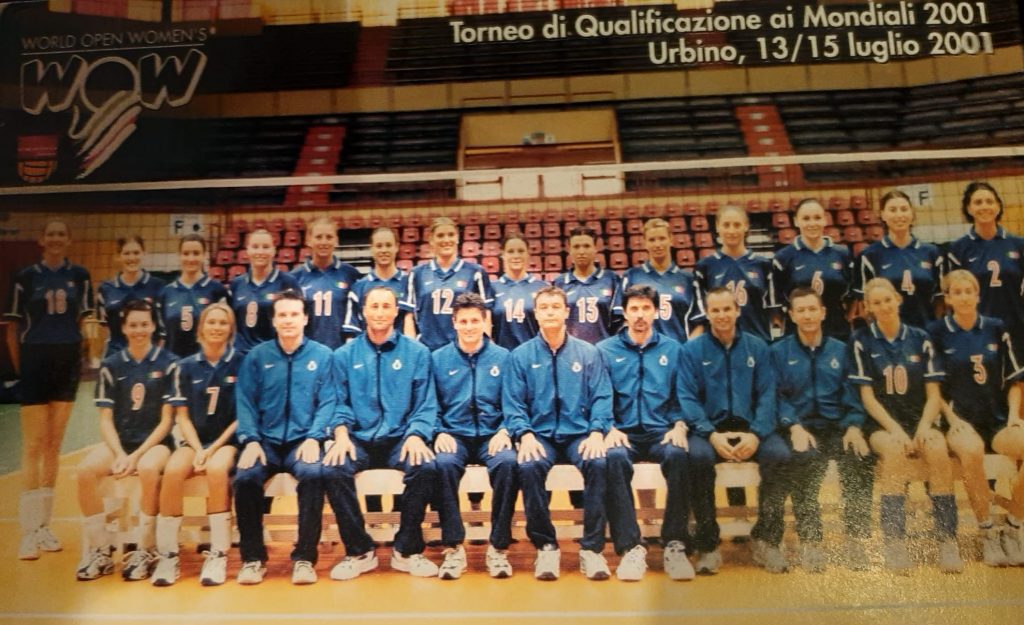
Marco Bonitta at the centre of the Italian National team, during 2002 FIVB Women’s World Championship qualifications (2001)
Source: Archivio privato Silvia Bonitta.
The day I spent in Ravenna with Marco and Silvia was very useful because they both helped in proving that Grazia Barcellona (see http://bit.ly/2m9hfnb ) was not the only female of the Boccalini sisters’ heritage that continued in sport. In fact, thanks to the photos shared by Marco and the medals Silvia showed me, I could research the athletics career of their mother, Gioia Mottino (1937-2012).
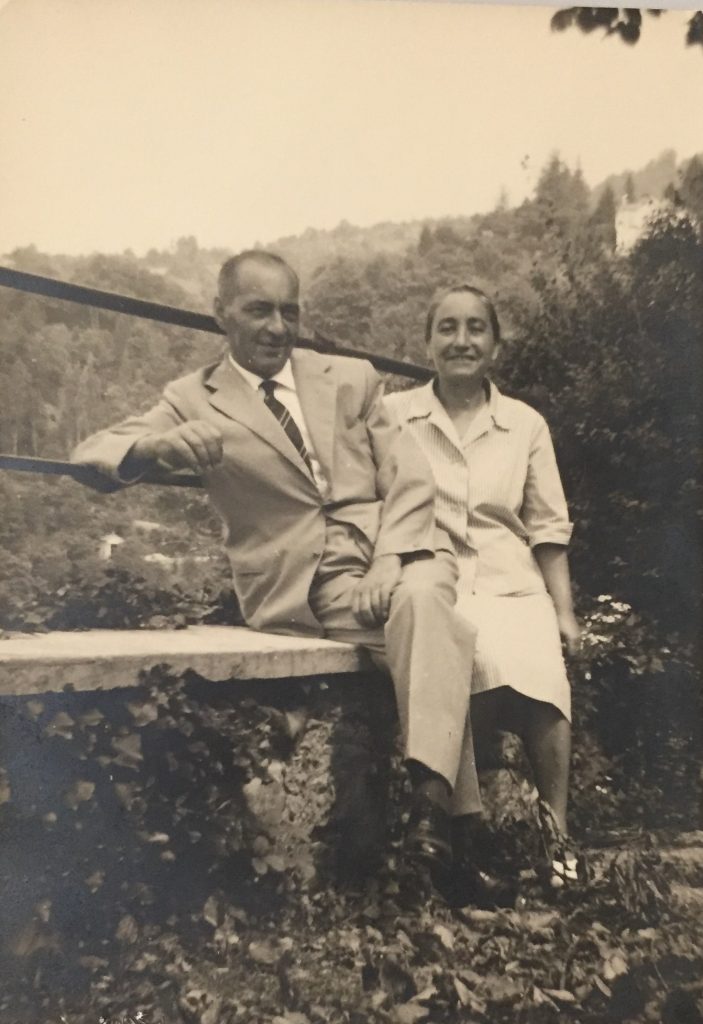
An older Giovanni Mottino and Luisa Boccalini (1961)
Source: Archivio privato Marco Bonitta
In 1934 Luisa “Gina” Boccalini (the eldest of the 3 sisters who played football in 1933, she was 27-years old at that time) married Giovanni Mottino from Alessandria (Piedmont) who had participated in boxing and cycling during his youth. In 1937 Luisa gave birth to their first daughter, Gioia, who, during WW2 followed her aunts Marta and Rosetta during their displacements from Milan; in 1944 their second daughter Rosa was born.
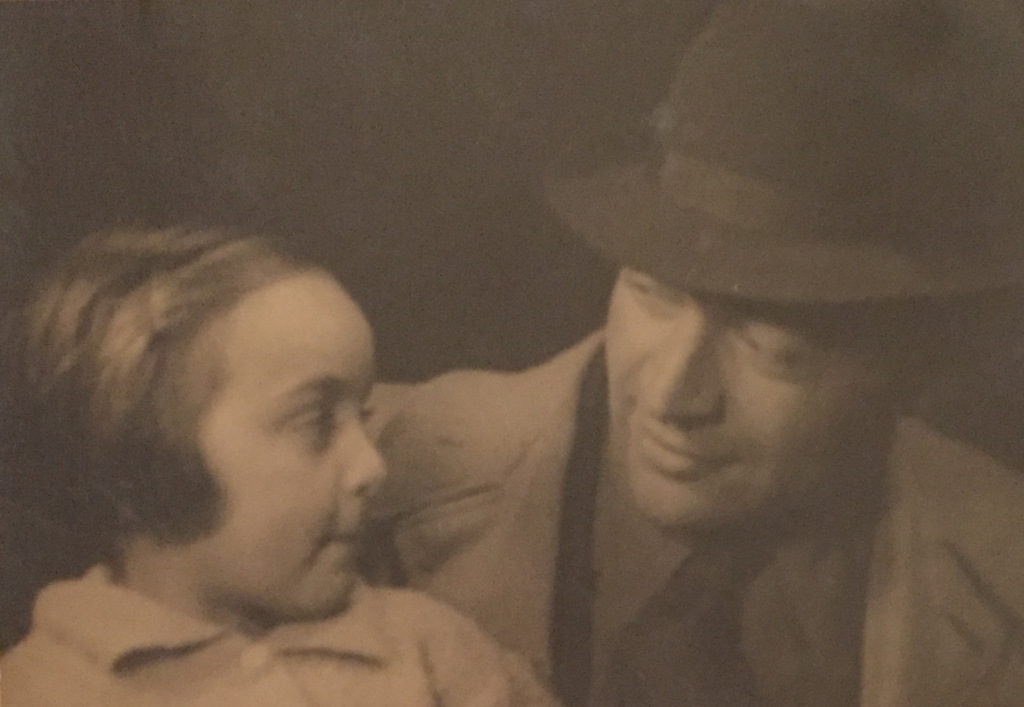
Gioia Mottino and her father Giovanni (late 1930s-early 1940s)
Source: Archivio privato Rosa Mottino
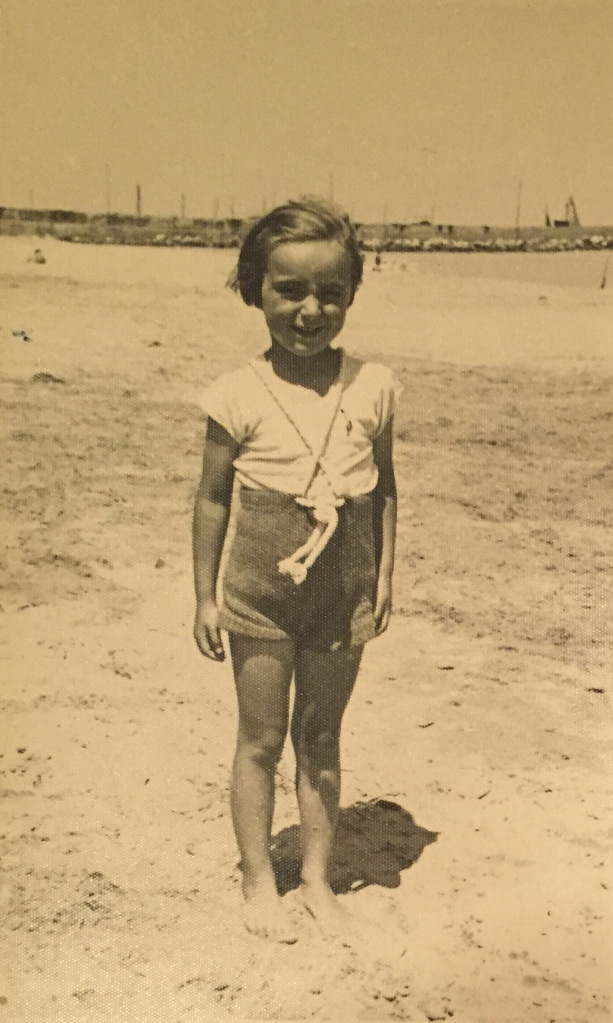
Gioia at the seaside (1941)
Source: Archivio privato Rosa Mottino
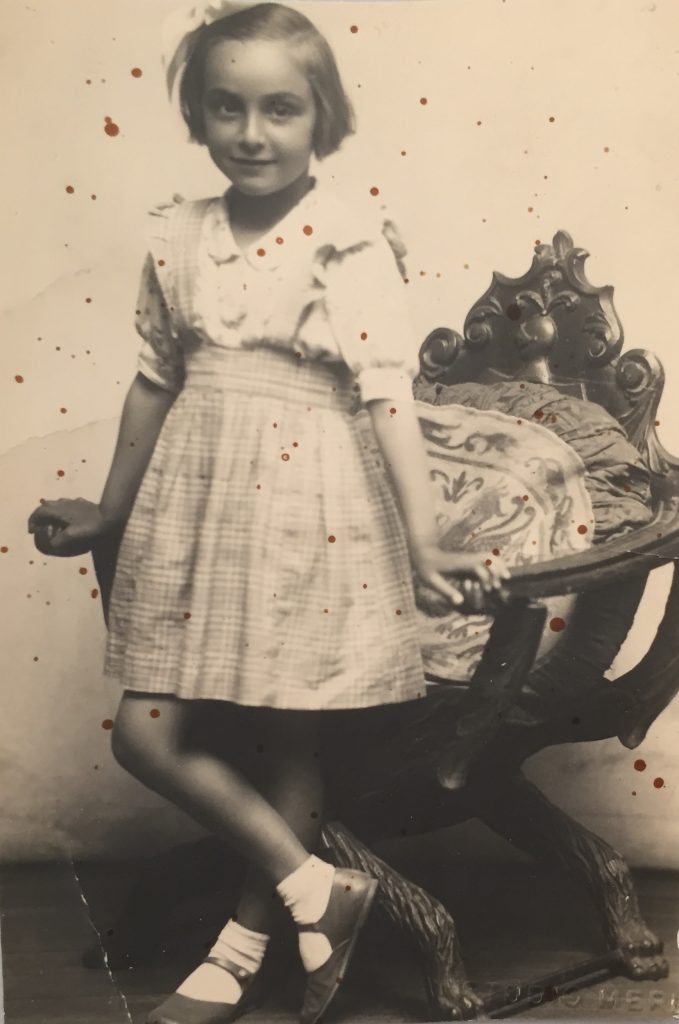
Gioia Mottino, aged 7, portrayed in Lodi (1944)
Source: Archivio privato Silvia Bonitta
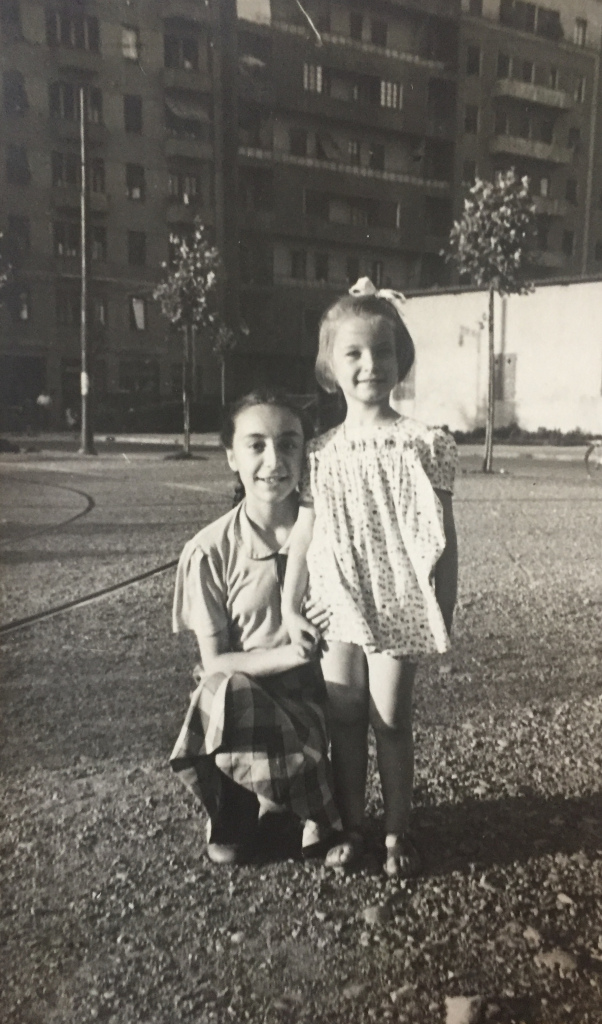
Gioia and Rosa
Source: Archivio privato Giovanna Boccalini Barcellona
Although Giovanni and Luisa lived during the war in the same building as Giuseppe and Giovanna, after the war the Mottino-Boccalini family decided to move to the outskirts of the city. Here the young Gioia met electrician Mario Bonitta (1932-1992), who had moved to Milan in 1943, like many Italian refugees from the Eastern side of the Adriatic Sea (Trieste, Istria and Dalmatia regions) did. Mario’s father, Nicolò Bonitta, had been one of the youngest Legionari, the Gabriele D’Annunzio nationalistic followers, who in 1919 occupied the city of Fiume, today known as Rijeka (Croatia). The loveof the two young scions would eventually overcome the political differences of the young Gioia and Mario …
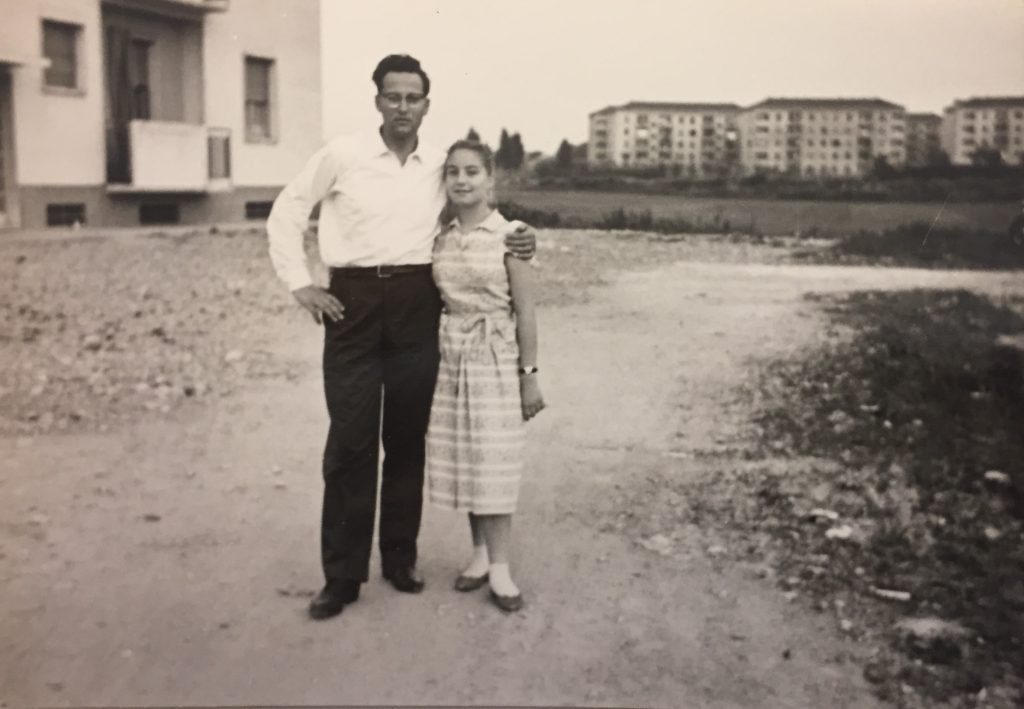
Mario (Gioia’s boyfriend) and the young Rosa, in the Milan outskirt (late 1950s)
Source: Archivio privato Marco Bonitta
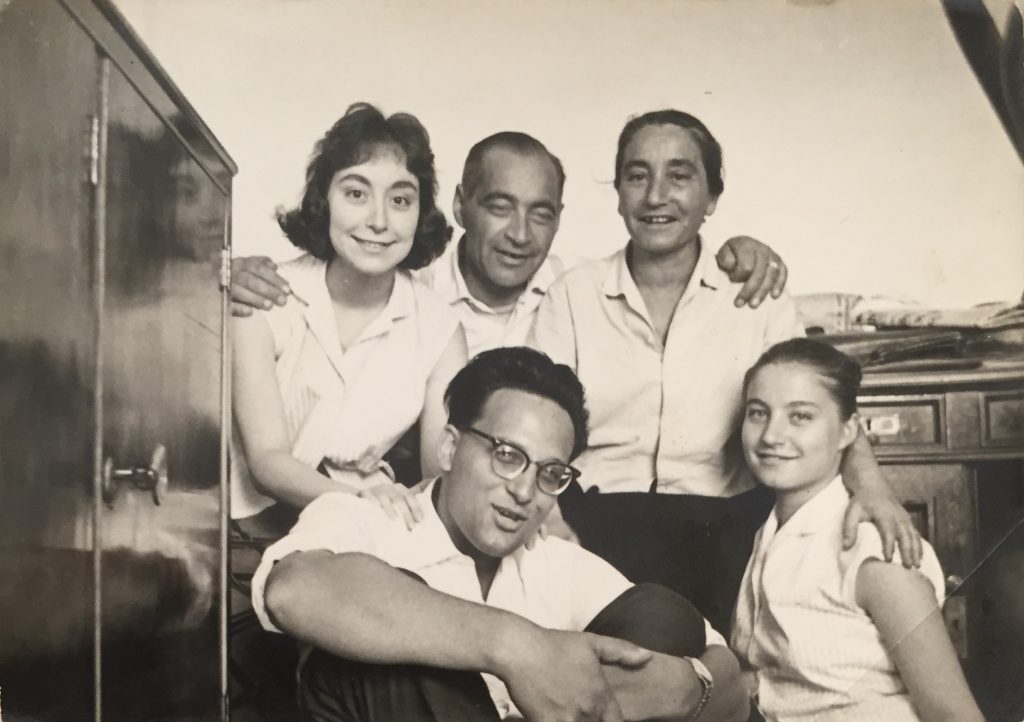
1st row: Gioia Mottino, Giovanni Mottino, Luisa Boccalini Mottino;
2nd row: Mario Bonitta, Rosa Mottino
Source: Archivio privato Marco Bonitta
Then, in 1960, Gioia and Mario were married …
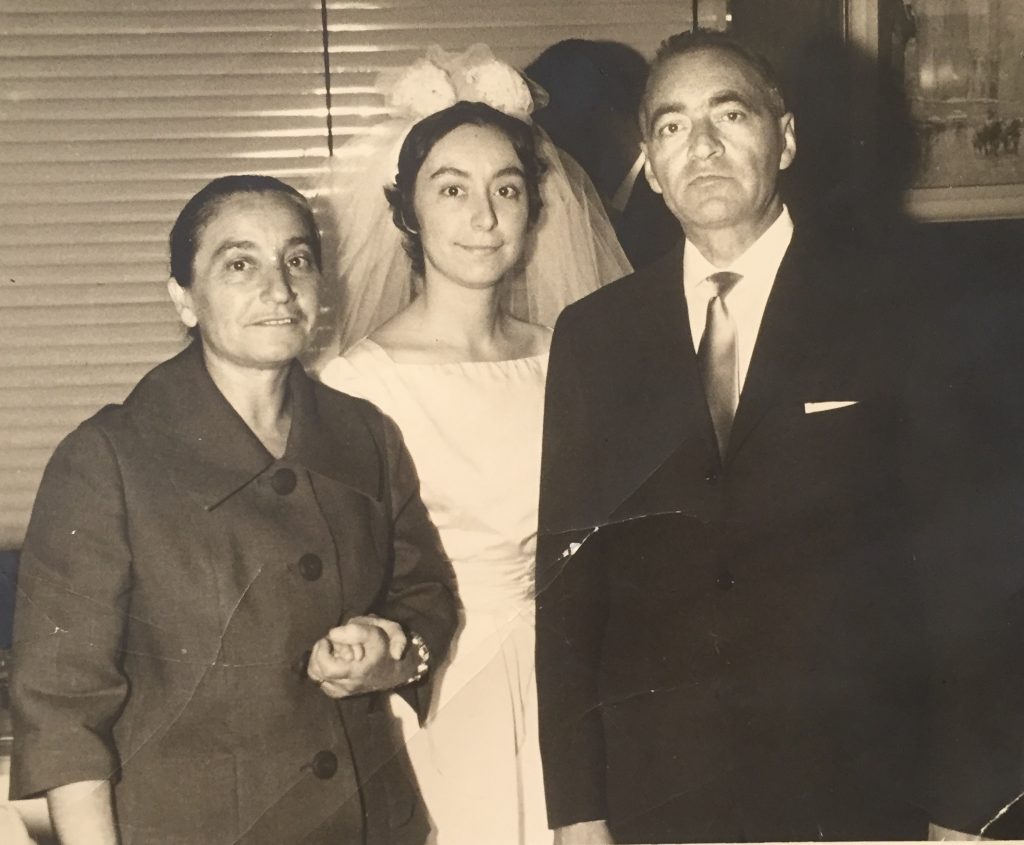
Luisa, Gioia and Giovanni on the day of Gioia’s wedding
Source: Archivio privato Silvia Bonitta
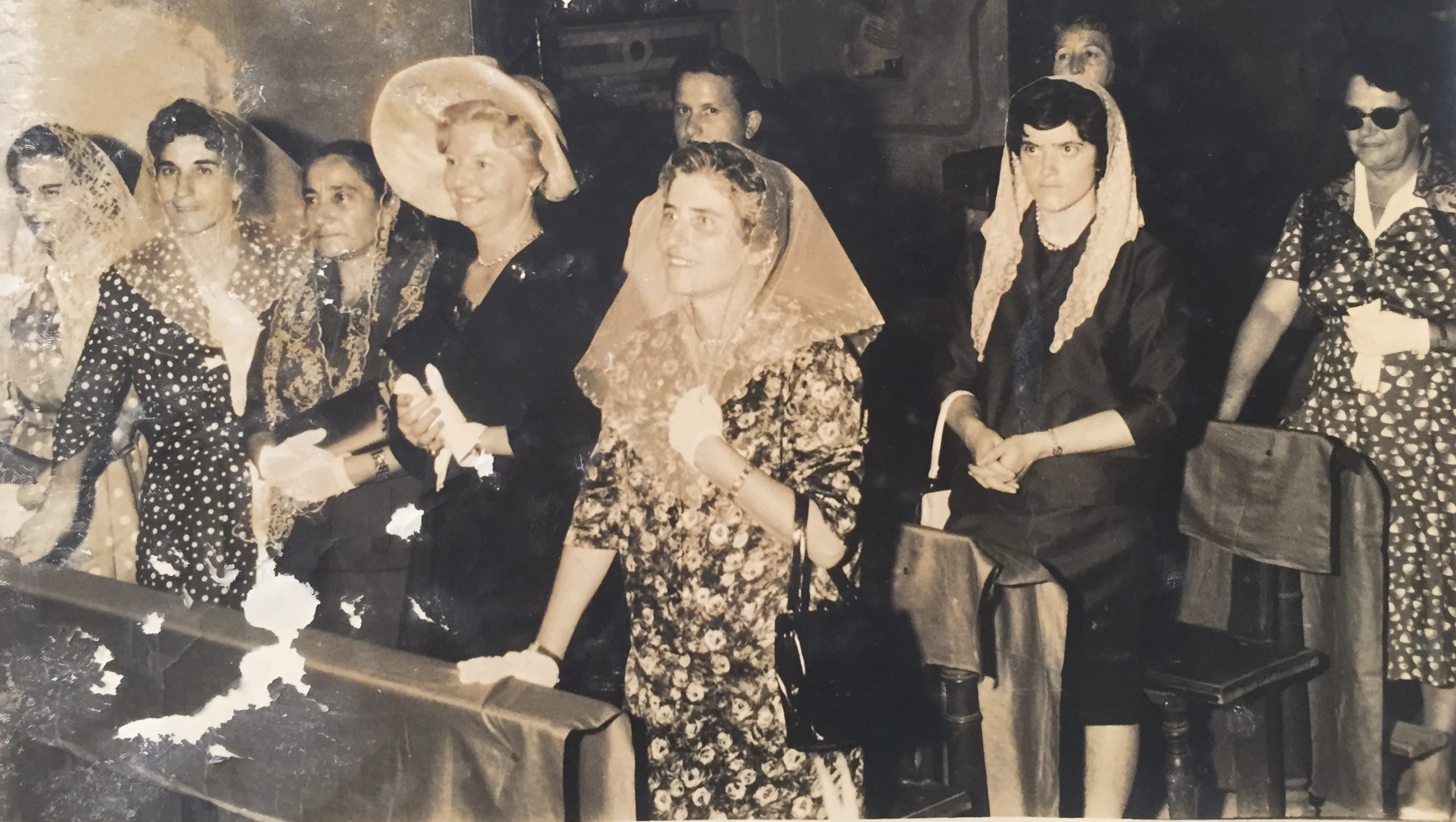
What a real parade of Italian women’s sports history, on the day of Gioia’s wedding!
Front from left: former ice-skater Grazia Barcellona (1st); former footballer Marta Boccalini (2nd); former footballer Luisa Boccalini (3rd ); former footballer and basketball player Rosetta Boccalini (5th)
Giovanna Boccalini Barcellona (the team manager of GFC in 1933) is standing at the far right in the back, wearing sunglasses
Source: Archivio privato Silvia Bonitta
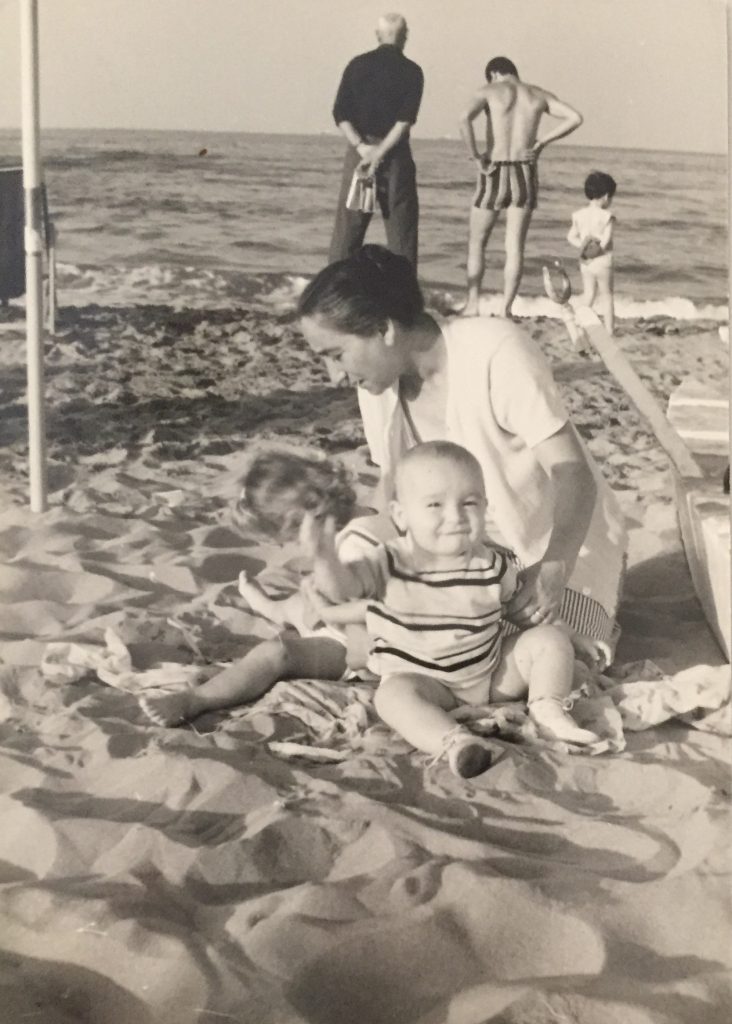
Some years later … Luisa and her two grandchildren Silvia and Marco, on the beach
Source: Archivio privato Marco Bonitta
Although during all the political changes after 1945, both Grazia and Gioia were respectful to the unspoken rule of the Italian society, before and after the fall of the Fascist regime: no more sport after marriage (they both married in 1960, the year of Summer Olympics in Rome). We already know about the marvellous sporting carrier of Grazia, but what about her cousin Gioia?
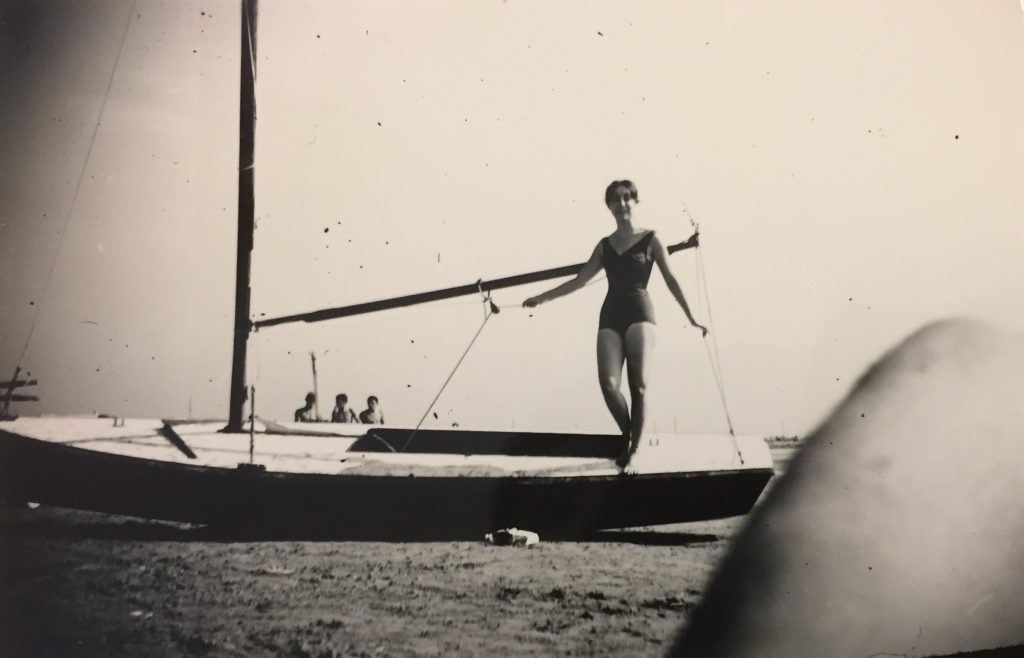
Gioia on a boat, wearing a swimsuit
Source: Archivio privato Marco Bonitta
Gioia inherited her mother’s love for sports. In some photographs, we can still see her playing tennis with some friends, having fun on the beach, visiting a Sports exhibition in Turin.
-
Gioia with some friends on a tennis Court at Giuriati Sport Centre, Milan (1959)
Source: Archivio privato Marco Bonitta.
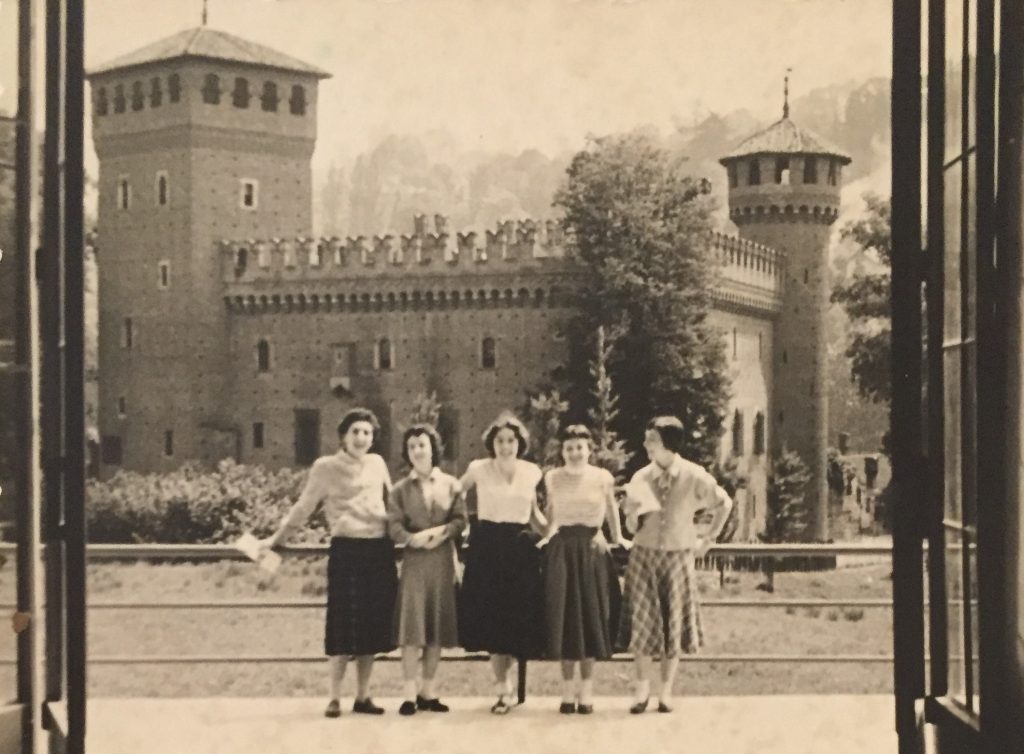
Gioia and some friends visiting Turin on the occasion of a local Sports Exhibition (Summer 1955)
Source: Archivio privato Marco Bonitta
Gioia found her way by participating in athletics: 100m, 200m, relay, long jump and shot put. Her career is witnessed by the complete series of her medals, won between 1953 to 1955.
Gioia’s Medals from 1953, 1954 and 1955. Source: Archivio personale Silvia Bonitta
The analysis of the medals, especially those bearing the place and the date of the sports event, and some indication of the discipline, can give hints that enable a reconstruction of Gioia’s career. Triangulating such data with those of the newspapers, it can be argued that Gioia won some of her medals during the athletics events organized by FIDAL (the official Italian Athletics Federation), and some others of the Rassegna Femminile, a specific women sporting event organized during those years by UISP, a left-wing organization with whom Gioia’s cousin, Grazia Barcellona, also collaborated. Silvia Bonitta still remembers her mother telling her about an event in Rome (the 1955 FIDAL medal?) in which she had the chance to race against Giuseppina Leone, the most important Italian sportswomen, who woulds go on to win the 100m bronze medal in 1960 Rome Summer Olympics.
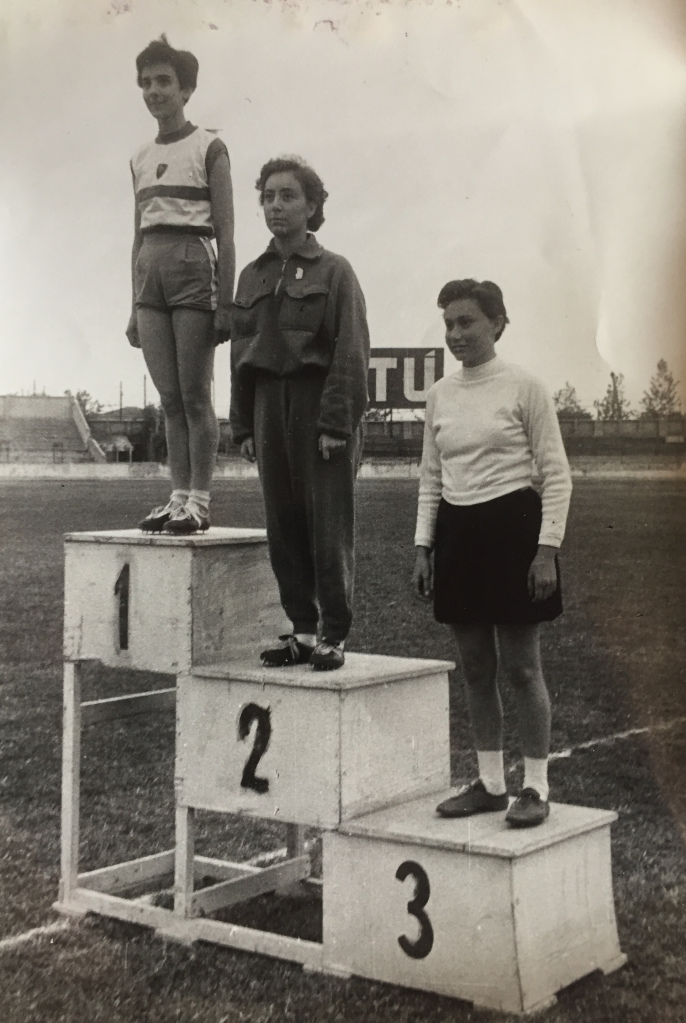
The caption of this photograph depicting Gioia in 2nd place
says that the photo was taken in Modena, on 10 October 1954.
From newspaper reports it can be argued that on that day the 1954 National Rassegna Femminile took place.
In the 1954 medal collection there are two silver ones from this event, 80m and long jump.
But to which one of these this does this photograph refer?
We still don’t know …
Source: Archivio privato Rosa Mottino
The journalist sources from 1953 to 1955 report that Gioia raced for the athletics team Sport Club Italia, a sports society located in Milan. Yet in the very few photographs, from 1956, we can see her wearing the colours of Libertas, a little Catholic sports club. It’s not clear whether Gioia changed allegiance, or whether she was a member of both clubs at the same time.
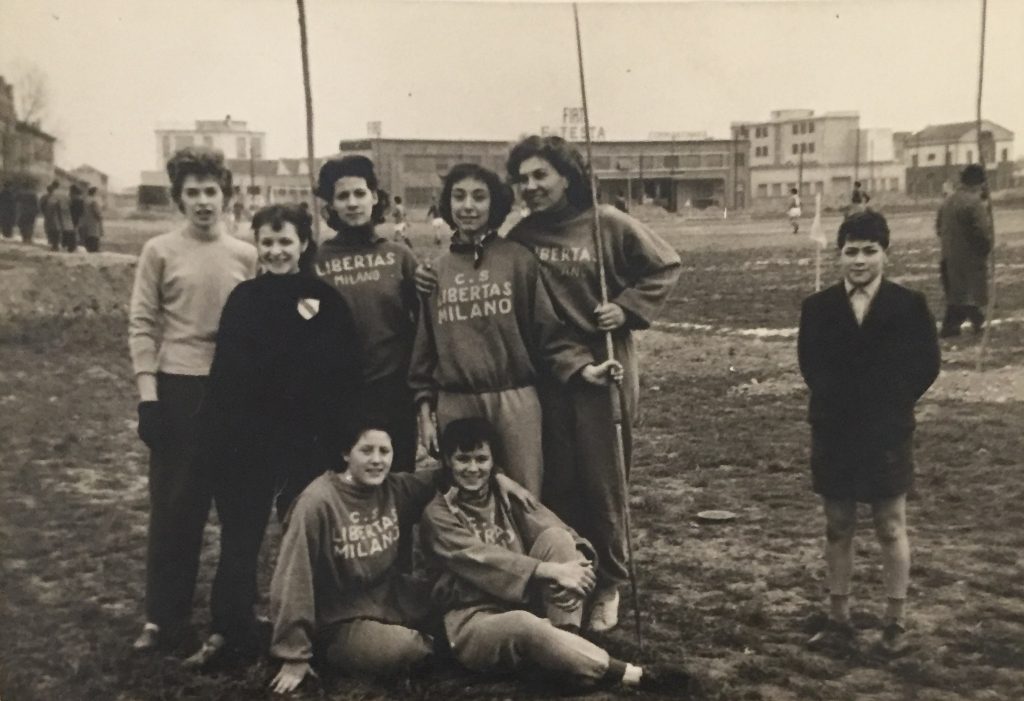
Gioia and her Libertas team-mates, some of them holding javelins
Source: Archivio privato Marco Bonitta
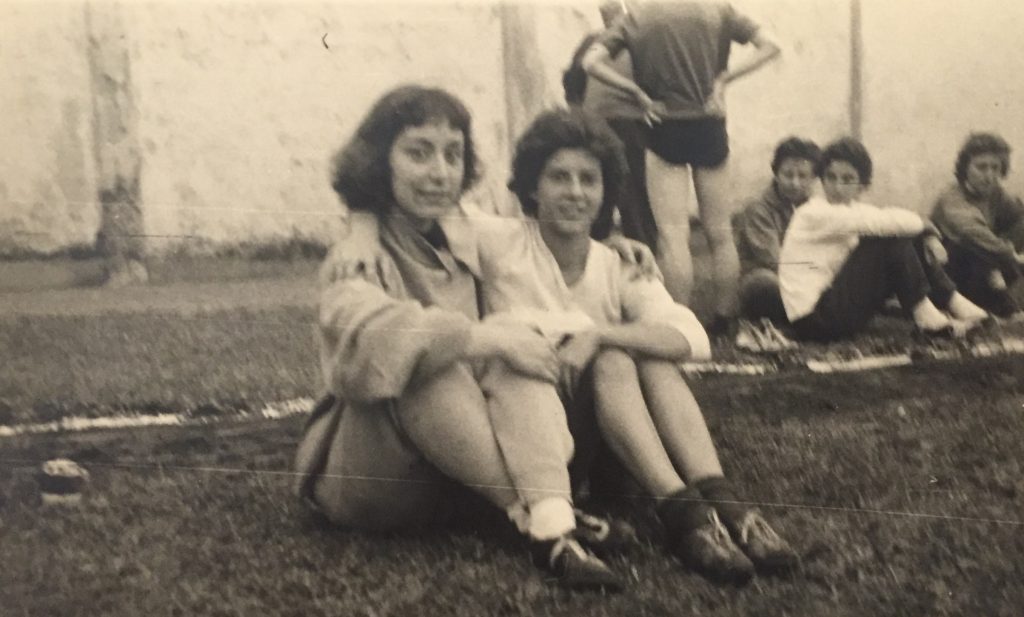
Gioia and an athletics team-mate at Falck Sport Centre, in Sesto San Giovanni (September 1956)
Source: Archivio privato Marco Bonitta
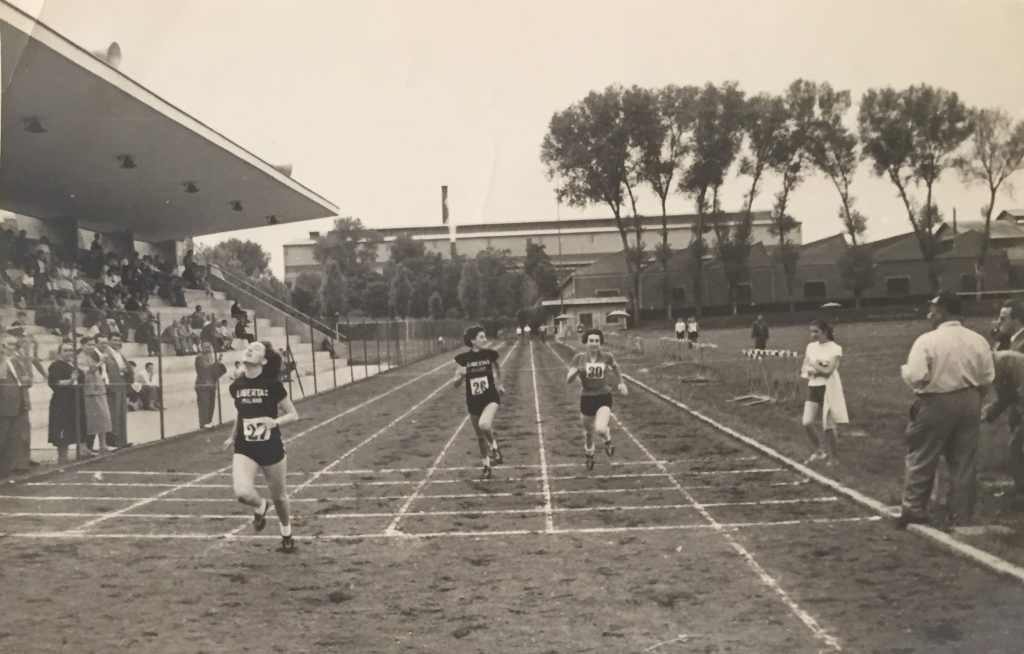
Gioia winning a race (1955 or 1956)
Source: Archivio privato Marco Bonitta
We should also bear in mind the fact that 1950s’ Italy, despite the return to democracy, was a very conservative society. All the bans of the Fascist regime (i.e. the one on women’s football) had disappeared, yet the number of girls practicing sports was less than the previous generation. Wearing sports shorts was still a bit of a scandal: that’s why in a lot of pictures the women are wearing tracksuits …
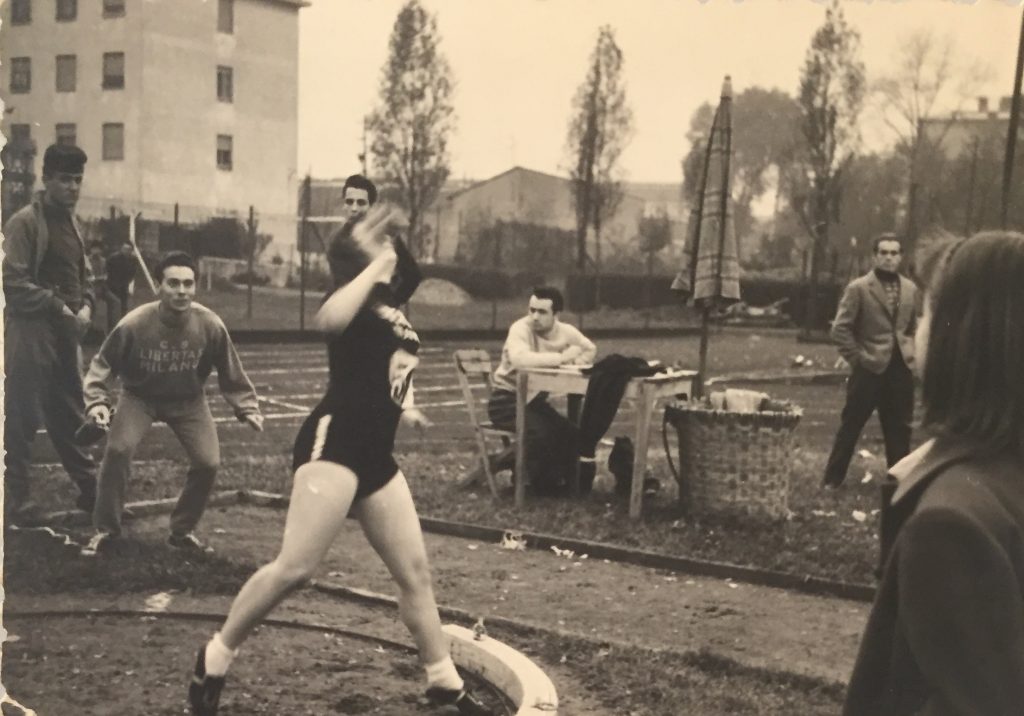
Gioia during a shot put event (1956)
In the handwritten caption, Gioia writes ironically about herself, saying that her throw was not so bad, for a rookie …
Source: Archivio privato Marco Bonitta
To read Part 10 click HERE
Article © of Marco Giani
Further Reading:
For the “galleria delle calciatrici”, see:
https://sorelleboccalini.wordpress.com/extra_gfc_la-galleria-delle-calciatrici/
For Alberto Schiavi and Marco Giani’s study about the Milanese football fields used by the calciatrici in 1933, see:
https://sorelleboccalini.wordpress.com/extra_gfc_i-campi-delle-calciatrici/
For a page about the medals and the athletic career of Gioia Mottino, see:
https://sorelleboccalini.wordpress.com/extra_latleta-gioia-mottino/

![“And then we were Boycotted”<br>New Discoveries about the Birth of Women’s Football in Italy [1933] <br> Part 9](https://www.playingpasts.co.uk/wp-content/uploads/2020/12/Boycotted-part-9-Marco.jpg)
